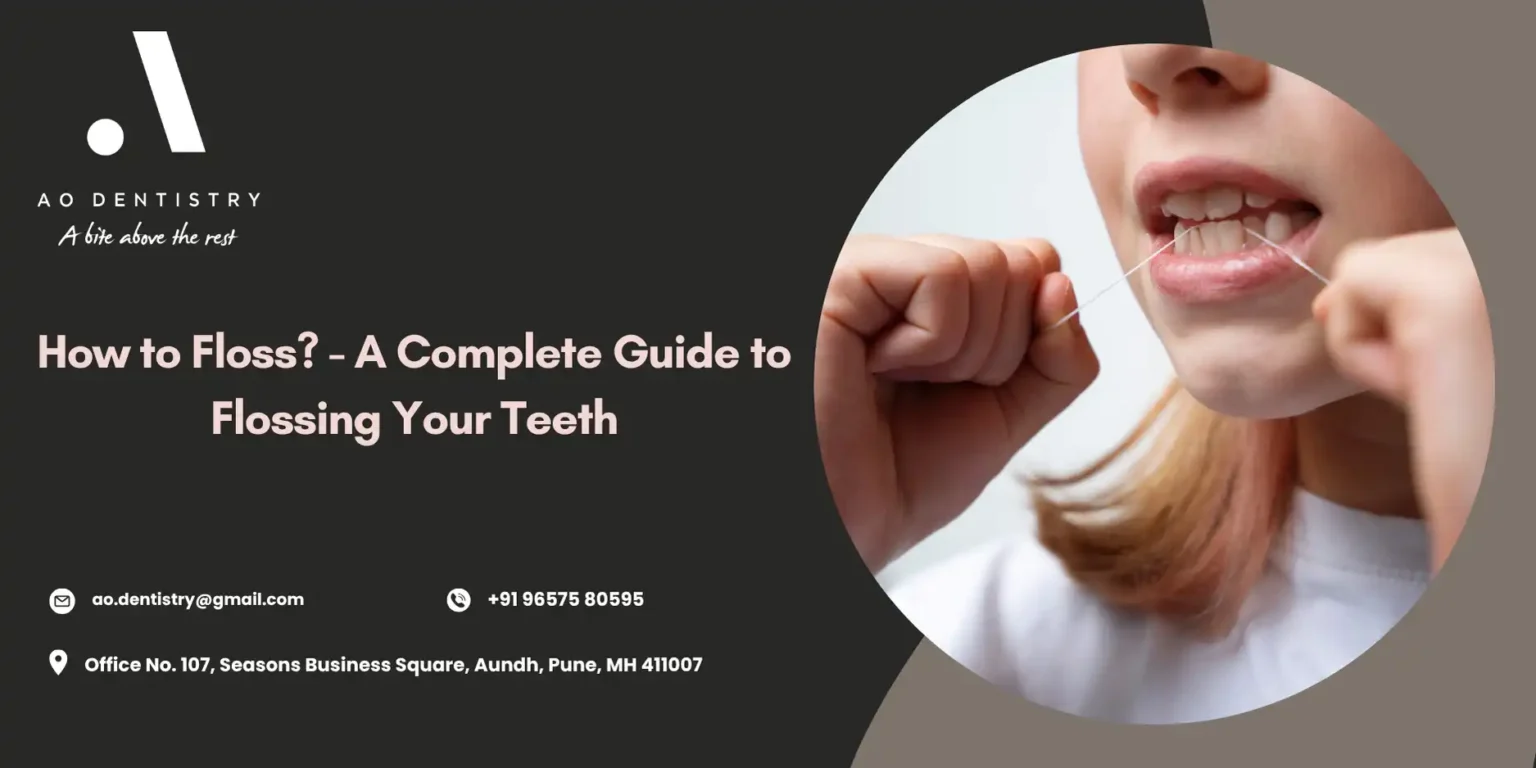You must have heard this many times now that daily oral hygiene does not end with brushing. Many people overlook the importance of flossing in dental hygiene, and many don’t know how to floss or how do you floss in the right way.
That’s why we have come up with a comprehensive article that includes
- The exact process of how to floss your teeth
- How do you floss your teeth
- How do you floss with Braces or Dental Work, and much more
Are you confused between aligners and braces? Click here to know about aligners vs braces.
How to Use Mouthwash? Learn more about it in this blog.
Why Flossing Matters
Do you know that, according to dentists, brushing cleans only 60% of the tooth surface. The 40% is left as it is in between your teeth. The solution? “Flossing”
When you learn how to floss your teeth in the right way and follow it daily, you:
- Eradicate plaque, which builds up over time
- Prevents you from gum disease
- Remove trapped food between teeth
- Protects you from diseases that are linked to poor oral hygiene, like heart disease
In simple words, if you know how to floss your teeth, you can extend the life of your natural teeth.
Now that you know the importance of learning how to floss your teeth, let’s look at the basics of how do you floss your teeth and how to use floss
Want to know what are the different types of crown? Read here
How to Stop Tooth Decay from Spreading? Read here
How Do You Floss Your Teeth? – The Basics
Once you understand the actual technique of flossing, learning how to floss effectively is not that difficult
Here are the exact steps of how to floss your teeth
- Take enough floss: Break around 18-24 inches of floss
- Holding technique: Wind most of the floss in your middle fingers, leaving 1-2 inches between your hands. The right holding technique can give you better control.
- Guide with thumb and index fingers: Your thumbs and index fingers should control the floss for upper teeth, switch to just index fingers for those harder to reach bottom teeth.
- Use gentle motion: Make sure you don’t directly snap in the gums, use gentle motion to clean between each tooth.Form a C-shape with the floss against each tooth and gently move up and down from the gum to the tip.
- Use a fresh section of floss: As you move to one tooth from another, make sure you use a fresh section of floss. To make this easy, you can unwind the floss and wind it around another finger.
- Don’t forget the teeth at the back: Don’t forget the molars in this process, as this is where most of the food particles get stuck.
At the start, learning how to use floss can feel like a difficult task, but as you consistently follow the right technique, it becomes an easy and enjoyable task.
Here is what all you can eat after tooth extraction.
Read more about what causes yellow teeth here
How to Floss With Braces or Dental Work
Even if you have undergone any dental treatment, like braces, it does not exempt you from flossing. In fact, it becomes more important to learn the right technique of how do you floss your teeth
Let’s look at how to floss your teeth with braces:
- Use orthodontic floss, which helps you with a stiff end slide under the main wire of your braces.
- Move the floss gently and carefully between the teeth without pulling any braces wire.
- Take the help of interdental brushes, which are easier to use than floss.
How to floss your teeth with bridges, implants, or crowns:
- Thread floss under the bridgework using floss threaders or Super Floss
- Pay attention to the boundary lines where crowns meet natural teeth, bacteria love to hide there
- Implants need gentle but thorough cleaning around their base to prevent peri-implantitis
- Consider interdental brushes for larger spaces around dental work
Learning how to floss with braces or dental work helps you extend the life of your dental work and makes your investment worth.
Looking for home remedies for swollen gums Click here.
How Often Should You Floss?
Experts suggest flossing daily. You can make flossing a part of your oral hygiene routine. Nighttime flossing can prevent food particles from getting stuck and eventually developing into a cavity.
Make sure you at least spend 2-3 minutes flossing, and do not focus on finishing it.
Common Mistakes People Make When Flossing
Now that you know the right techniques of how do you floss your teeth, let’s understand the common mistakes many make while flossing:
- Flossing roughly can damage the gums and teeth, and even the dental work. Make sure you use gentle and controlled moves.
- Only flossing up and down misses the most important part of your teeth, which is the sides of the tooth. Don’t forget to curve the floss in a C shape around each tooth.
- Using the same section of floss on all the teeth just moves the bacteria from one tooth to another. Use a new section of floss for every tooth.
- Flossing only the front teeth does not help in removing all the bacteria. So make sure you don’t forget the teeth at the back.
- Don’t stop because your gums are bleeding. Gum bleeding is very common initially, so don’t stop flossing consistently because of bleeding.
Read to know if RCT is Painful
How to Use Floss for Kids
Here are some tips on how to use floss for kids:
- Start flossing when all the milk teeth are out, and they touch each other at around 2-3 years.
- Parents should help them build the habit of flossing until they can do it on their own
- Establishing a routine like flossing daily at the same time, can help in building the habit.
- Floss picks and a water flosser can help children to make the flossing task easier
Here’s how to Stop Grinding Teeth in Sleep Naturally
FAQs
How do you floss correctly?
Wrap the floss around your fingers. Slide up and down in a C shape on each tooth surface and below the gum border.
Why is flossing no longer recommended?
It’s a myth. Flossing is still recommended by all the dental experts in the world
Is it better to floss before or after brushing?
It is recommended to floss before you brush for effective removal of plaque.
How can I floss my teeth at home?
Other than traditional floss picks, interdental brushes, or water flossers can make flossing at home easier. You can try and test what fits right in your dental hygiene routine.
Is it OK if I never floss?
No, it is not okay, as brushing can only clean 60% of the teeth, the complex areas can be cleaned by floss
Can flossing remove tartar?
Flossing can stop the tartar production, but it can’t remove the old tartar
Flossing can make a huge difference in your dental hygiene journey as it is one of the first steps that keeps your teeth away from bigger dental issues. Try and test what routine works for you and your teeth, and follow it consistently. You future teeth will thank you


